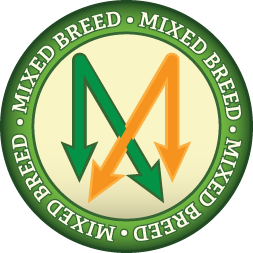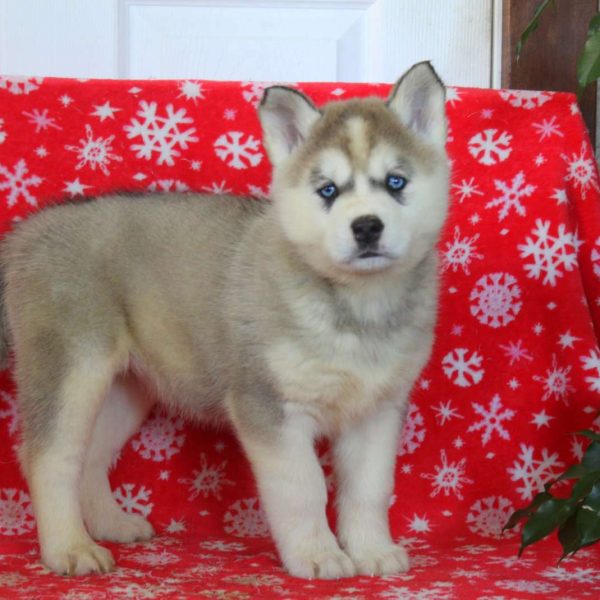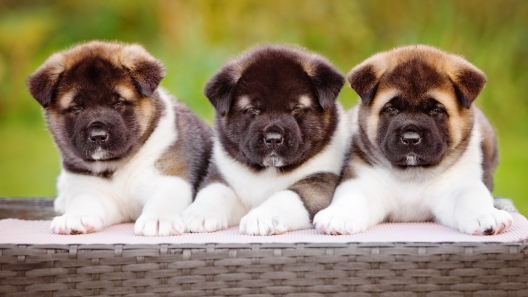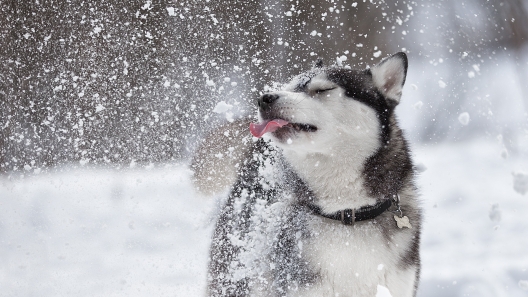
-
Activity Level:
moderate
-
Shedding Level:
high
-
Grooming Level:
high
-
Trainability:
moderate
-
Good for Novice Owners:
moderate
-
Adaptability:
moderate
-
Kid/Pet Friendly:
often
-
Prey Drive:
high
-
Watchdog:
very alert
- Average Size: Large
- Average Lifespan: 10-15 years
Akita Mix Dog Breed Information
Overview
Temperament
Adaptability
Health
Owner Experience
Grooming
Activity Level
Size
Life Span
The Akita Mix is a cross between an Akita and another dog breed. It’s important to talk to the breeder about the other parent breed in the cross and ask questions so you have an idea of what to expect in an Akita Mix puppy. They could take on traits from just one parent or any combination of traits from both of them.
An Akita tends to be loyal, devoted, and dedicated to their families. They do tend to get along well with children, but they tend to be wary of strangers and they have a high prey drive. Although they tend to be quiet dogs, they will bark to alert you. This makes them good watchdogs. On top of that, Akitas have an instinct to guard and protect. This makes socialization and training early and often particularly important for this breed.
You may be able to expect a similar temperament in your Akita Mix. However, the other dog breed in the mix could affect their temperament. At the very least, the other parent breed will introduce some other possibilities that could affect your Akita Mix’s overall personality and temperament. Asking the breeder about the other parent breed can help prepare you for all of the possibilities. Meeting the mother dog can also give you an idea of what temperament to expect in your Akita Mix puppy.
Akitas are moderately adaptable dogs that can adapt to apartment living as long as they get the exercise, attention, and mental stimulation they need to be happy and healthy.
Due to their protective instincts and high prey drive, they should only be let off-leash in securely fenced areas. Depending on the other parent breed, they could make your Akita Mix less adaptable, so it’s important to ask the breeder about them.
A mixed-breed dog can inherit any combination of the potential health concerns common to one or both of the parent breeds. Although they can sometimes “win the genetic lottery” and inherit none of them, this is not a guarantee. From the Akita side, the potential health concerns to be aware of in an Akita Mix include hip dysplasia, thyroid issues, skin conditions, progressive retinal atrophy, and acquired myasthenia gravis.
Reputable breeders will screen their breeding stock to avoid passing issues on to puppies. So, make sure you ask the breeder about the other parent breed in the cross. Also, talk to them about the genetic and health history of both of the parent breeds.
Although Akitas love their family and prefer to be near them, they also have an independent nature. They are highly intelligent and pick up training quickly, but they can also have a stubborn streak. This can be difficult for a first-time dog owner to navigate on their own.
The other parent breed could balance this out, but you still need to be prepared for a potentially hard-headed pooch. As such, puppy training classes are recommended. Regardless of owner experience, puppy training classes can still be a good idea as these classes often offer opportunities to socialize a puppy.
Akitas have a dense double coat that will shed moderately year-round with heavier shedding sessions twice a year as seasons change. Brushing a few times a week and moving to daily brushing during seasonal shedding can help your dog be more comfortable and contain a lot of the loose fur to your brush. Bathing is on an as-needed basis.
The other breed in the mix could affect how much maintenance your Akita Mix’s coat needs. Regardless of coat care, you will also need to care for your Akita Mix’s nails, ears, and teeth. Monthly nail trimming is usually enough to keep nails from growing too long. But, you may need to cut your dog’s nails more often if they grow quickly or just aren’t wearing down as much on their own.
Although ears that flop over are more prone to ear infections than those that stick straight up, you still need to check ears regularly and carefully clean your dog’s ears as needed. Your Akita Mix’s ears should be clean, dry, and free of debris or pests. If you see redness, irritation, excessive wax or moisture, or something else that seems odd, it’s time to visit the vet.
It’s also important to take care of your dog’s teeth. Many dog owners overlook this, which is why gum disease is one of the most common health problems in dogs. But, it doesn’t have to be that way! Practicing good dental care for dogs can help prevent painful dental diseases later in life. Brushing teeth or using an enzyme toothpaste every day is ideal. You can also work with your vet to identify good dental hygiene chews and to create a “dental care diet” specifically for your pup.
Akitas tend to have a moderate activity level. Daily walks plus some playtime and time to run are usually sufficient for these dogs. The other parent breed could affect the exercise needs for an Akita Mix. By talking to the breeder about the other parent breed, you can get a good idea of what sort of energy range to prepare for in your puppy.
A fully-grown Akita usually stands 24-28 inches tall and weighs 75-130 pounds. The other dog breed in the mix can seriously affect the size you could see in a fully-grown Akita Mix.
So, make sure you talk to the breeder about the other parent breed. Although there can still be some variation, meeting the mother dog in person can also give you some idea about an Akita Mix’s potential size.
Akitas generally live for 10-15 years. The other parent breed in the cross could have an effect on this for an Akita Mix. Talking to the breeder about it can help clarify to what extent it could be affected if at all.









